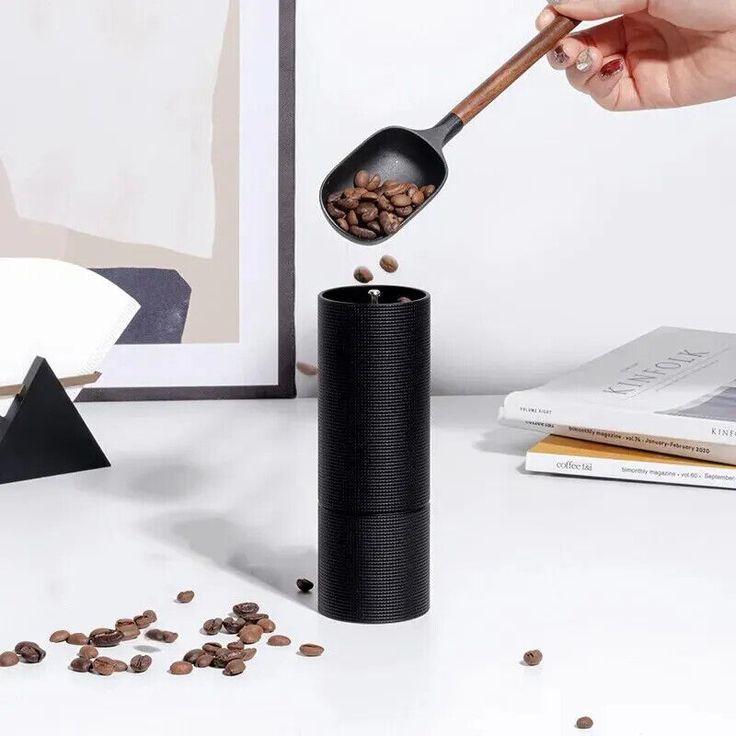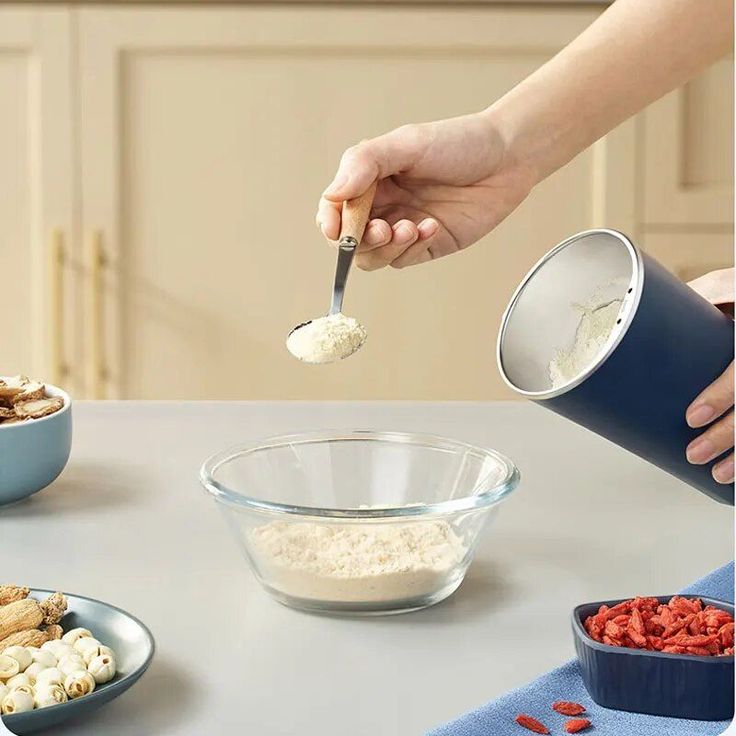Introduction to Peppercorns Grinding with Coffee Grinders
Can you grind peppercorns in a coffee grinder? Are you an at-home culinary enthusiast looking to enhance dishes with bold, fresh flavors? Using your coffee grinder for grinding spices might just be the game-changer you need. In fact, many already have a coffee grinder perched on their kitchen counter. If that’s you, let’s discuss the intriguing possibility of using it to grind peppercorns.
While it’s not its intended use, a coffee grinder can serve as a multifunctional appliance that grinds spices as well. This blog post aims to explore the versatility of coffee grinders and how they can be applied to spice grinding. We’ll delve into the types of grinders suitable for this purpose, examine their grinding mechanisms, and provide tips on achieving the best results.
Remember, fresh ground spices can significantly elevate your dishes — so let’s unlock a world of flavor by learning to efficiently use the coffee grinder for more than just coffee. With a few tips and some cleaning advice, you’ll be masterfully grinding peppercorns and other spices, all the while using the convenience of a single kitchen device.
Stay tuned as we dive into the world of spice grinding with coffee grinders, offering insights that will spice up not only your cooking but your coffee rituals as well.

Analyzing the Differences: Coffee Grinders vs Pepper Mills
Identifying the best tool for spice grinding means comparing coffee grinders and pepper mills. Both have their unique designs and strengths suited for specific tasks. Coffee grinders often feature two styles: blade and burr. The blade grinders use a spinning blade to chop beans, much like a blender. Burr grinders, however, have two abrasive surfaces that crush beans for a more uniform size. These grinders, especially burr types, can double as spice grinders given the right circumstances.
Pepper mills, on the other hand, are designed solely for spices. They consist of two burrs that the user turns to crush peppercorns against one another, achieving a fresh, coarse ground pepper. Pepper mills are typically not suitable for coffee because the burrs are not designed to handle the size and consistency of coffee beans. They excel at their intended purpose, delivering fresh, potent spice with each twist.
When considering a coffee grinder for spices, one must consider the grind’s consistency. Coffee grinders provide varied settings that are ideal for grinding spices to the desired coarseness. However, pepper mills offer a less adjustable approach, focusing on delivering freshly ground pepper rather than a range of spices.
Moreover, the volume may be a deciding factor. Coffee grinders tend to handle larger quantities, ideal for those looking to grind bulk spices. Pepper mills are best suited for immediate, table-use grinding. Both tools work well within their niches, but for the adventurous cook, the coffee grinder may present an invaluable versatility. Just bear in mind, cross-contamination of flavors can be an issue without proper cleaning routines, a point we will address later in this blog post.
The Mechanism: Burr and Blade Grinders for Spices
When opting for a coffee grinder to handle your spice needs, understanding the differences between burr and blade mechanisms is crucial. Both types have their own strengths and particular uses in the kitchen.
Burr Grinders for Spices
Burr grinders operate with two abrasive plates, known as burrs, which crush spices to a uniform consistency. This method is preferable for achieving a consistent grind, essential for spices to release their full aroma and flavor. Here’s what makes burr grinders suitable for spices:
- Consistency: They provide a uniform grind, allowing for even cooking and flavor distribution.
- Adjustability: Many burr grinders offer settings to adjust the grind size, perfect for spices that may require different coarseness levels.
- Less Heat: Burr grinders generate less heat, so the spices don’t lose essential oils and flavors during grinding.
Blade Grinders for Spices
Blade grinders use a single blade that spins, chopping spices in a more inconsistent manner. While not as precise as burr grinders, blade grinders are typically more accessible and budget-friendly. Consider the following when using blade grinders:
- Speed: They grind spices quickly, saving time during meal prep.
- Cost-effective: Usually less expensive than burr grinders.
- Versatility: Good for mixing different spices quickly, though they may not offer the same uniformity.
In summary, whether you choose a burr or a blade grinder, both can be adapted to grind spices effectively with the right approach. Selecting the appropriate grinder type will depend on your specific needs for consistency, volume, and how finely you need your spices ground.

How to Properly Grind Spices in a Coffee Grinder
Turning your coffee grinder into a spice grinder requires some know-how. For spices, like peppercorns, using the coffee grinder can yield a fresh and fine result, enhancing any dish’s flavor. Here’s how to do it right:
- Clean Your Grinder: Start by ensuring your coffee grinder is clean. Old coffee grounds can leave unwanted flavors in your spices.
- Measure Your Spices: Don’t overload the grinder. Measure out what you’ll need for your recipe to ensure even grinding.
- Pulse, Don’t Grind: Use the pulse option, if available. Short bursts of grinding are better than a long grind to keep the spices from heating and losing flavor.
- Check Consistency: Stop occasionally to check the grind. Make sure it’s getting to the size you want for your dishes.
- Clean After Use: Wash the grinder after grinding spices to prevent flavor cross-contamination the next time you use it. Use a brush or a soft cloth to remove spice residue.
By following these simple steps, your coffee grinder can efficiently double as a spice grinder. With proper use and care, it can add versatility to your kitchen without the need for extra gadgets.
Selecting the Right Spices for Coffee Grinder Grinding
When venturing into the realm of grinding spices with a coffee grinder, it’s essential to choose the right spices. Coffee grinders can handle a variety of whole spices efficiently, making them a versatile addition to your culinary toolkit. Here, we’ll discuss the spices most suitable for grinding with your coffee grinder.
Not all spices are created equal when it comes to grinding them with a coffee grinder. The spices best suited for coffee grinder grinding tend to be those that are drier and more rigid, such as peppercorns, cumin seeds, coriander seeds, and whole cloves. On the contrary, very soft or moist spices might not grind well and could even clog the mechanism, so they should be avoided.
Dried herbs, such as rosemary, thyme, or basil, are also great candidates. They can transform into a very fine powder, perfect for rubs, soups, and stews. Cinnamon sticks provide a fresh and robust flavor when ground right before use, making them a preferred spice for grinding. Nutmeg, with its hard texture, stands as an ideal spice to grind fresh in a coffee grinder as well.
When preparing to grind spices, ensure they are completely dry. Any moisture can make cleaning more challenging and may damage the grinder. Additionally, spices with a higher oil content, like star anise or cardamom, should be ground in smaller amounts to avoid creating a paste.
In conclusion, using your coffee grinder to process a myriad of spices not only saves space with one multitasking tool but also gives your dishes a pop of maximum flavor from freshly ground spices. Just remember, to maintain coffee’s distinct taste, it’s advisable to either have a dedicated coffee grinder for spices or to clean thoroughly between uses.

Cleaning Techniques to Avoid Flavor Cross-Contamination
Cross-contamination between spices and coffee is a significant concern when using a single grinder for both. Here are techniques to keep your coffee grinder clean and flavors distinct:
- Use Rice for Deep Cleaning: Grinding plain rice in your coffee grinder can help absorb and remove lingering flavors and oils left by spices. Ensure to discard the rice powder afterward and wipe down the grinder.
- Regular Cleaning Regimen: Establish a habit of cleaning your grinder after each use. Use a stiff brush or a dry paper towel to remove all spice residues. Prompt cleaning prevents flavor transfer between spices and coffee.
- Deep Clean with Alcohol Wipes: For a deeper clean, occasionally use alcohol wipes to clean the grinding chamber and blades. This helps dissolve oils that can carry flavors.
- Consider Dedicated Grinders: If you regularly grind both coffee and spices, consider investing in two separate grinders. This prevents any risk of cross-contamination and keeps flavors pure.
- Disassembly for Comprehensive Cleaning: If possible, disassemble your coffee grinder for a thorough cleaning. Follow the manufacturer’s instructions to safely remove parts and clean them individually.
By implementing these techniques, you can maintain the quality and distinctiveness of both your spices and coffee, ensuring fresh and contaminant-free grinding sessions.